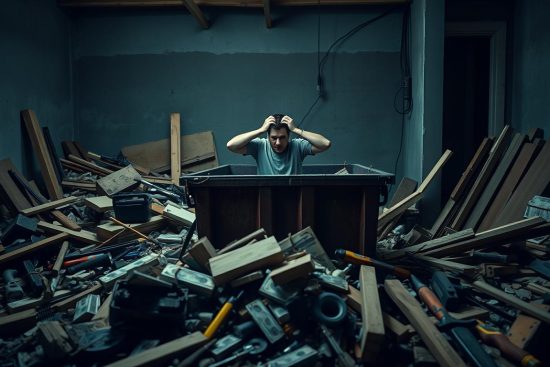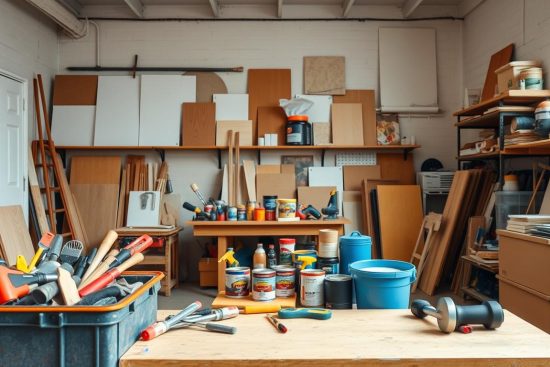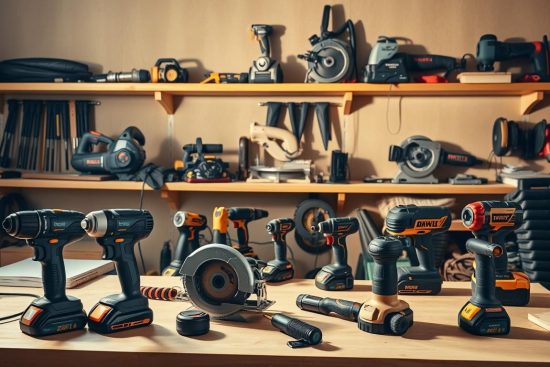Dreaming of a fresh, functional space that reflects your style? This guide walks you through transforming your home’s most personal room into a sanctuary. Whether you’re inspired by Liz Williams Interiors’ sleek modern updates or Reid Rolls’ bold color choices, we’ll show how blending creativity with professional know-how delivers stunning results.

Why does planning matter? Take Emily J Followill’s bright, cheerful makeover: smart layouts and material choices turned cramped quarters into a spa-like retreat. Projects like these prove that balancing vision with practicality—and partnering with skilled teams—is key to success.
From budgeting hacks to navigating permits, we’ve structured this resource to simplify every phase. You’ll discover trending tile patterns, lighting tricks, and how MLM Custom Homes streamlines timelines. Plus, DIYers get actionable tips for tackling tasks safely.
Consider this your friendly roadmap. We’ve packed it with real-world examples, designer insights, and photos to spark ideas. Let’s turn “what if” into “what’s next”—one step at a time.
Key Takeaways
- Learn how to blend creative vision with expert guidance for a polished finish
- Gain inspiration from real projects, including budget-friendly DIY approaches
- Understand critical phases like budgeting, material selection, and workflow planning
- Discover modern trends that add value without sacrificing functionality
- Access tips from industry pros like MLM Custom Homes to avoid common pitfalls
Understanding Your Vision and Setting Goals
Your morning ritual deserves a backdrop that sparks joy and efficiency. Before swinging a hammer, take time to define what “perfect” means for you. Does crisp white tile calm your nerves, or do jewel-toned accents energize your day? A recent client swapped builder-grade beige for sage green walls and brass fixtures, creating a nature-inspired retreat that lowered their stress levels.
Defining Your Ideal Style and Atmosphere
Color psychology matters more than you might think. Soft blues promote relaxation, while warm neutrals make compact spaces feel airy. Consider how finishes impact mood: matte black hardware adds modern edge, while brushed nickel offers timeless appeal. One homeowner doubled natural light with a skylight and mirrored vanity, transforming a gloomy corner into their favorite home feature.
Evaluating Your Existing Layout
Grab a tape measure and sketch your current setup. Ask:
- Does traffic flow feel cramped near the shower?
- Could repositioning the vanity create better storage?
- Are outlets placed conveniently for styling tools?
| Common Issues | Smart Changes | Impact |
|---|---|---|
| Cluttered countertops | Recessed medicine cabinet | +40% storage |
| Poor lighting | Layered sconces + dimmer | Better task visibility |
| Outdated tile | Large-format matte finishes | Modern look |
Portland designer Mara Holt suggests: “Photograph problem areas from multiple angles. You’ll spot layout opportunities photos reveal that walkthroughs miss.” Whether planning a full bathroom remodel or cosmetic updates, clear goals prevent mid-project indecision. Jot down three non-negotiable features and two dream elements – this balance keeps projects focused yet flexible.
Budgeting, Financing, and Cost Considerations
Balancing style and savings starts with a solid plan. Material quality and labor typically eat 60-75% of budgets, but smart choices can stretch dollars further. A Nashville homeowner saved $3,200 by refinishing their existing tub instead of replacing it—proof that strategic updates often trump full overhauls.
DIY Efforts Versus Professional Expertise
Painting walls or installing shelves? Perfect DIY tasks. Electrical work or tub installation? Leave it to licensed pros. Atlanta designer Carla Torres notes: “Clients who handle demo themselves but hire experts for plumbing save 15-20% without compromising safety.”
| Task | DIY Cost | Pro Cost | Time Saved |
|---|---|---|---|
| Tile Backsplash | $220 | $1,100 | 8 hours |
| Vanity Assembly | $0 | $450 | 6 hours |
| Tub Surround | $900 | $2,300 | 12 hours |
Financing Options and Cost-Saving Tips
Quartz countertops offer durability at $55-$75/sq ft—cheaper than marble but equally chic. Consider these money-smart moves:
- Explore home equity loans for projects over $15k
- Use 0% APR credit cards for short-term financing
- Repurpose existing fixtures when possible
Always budget 10-15% extra for surprises. One couple avoided cash crunches by scheduling their remodel project during local suppliers’ seasonal quartz sales. Partial updates often deliver 80% of the visual impact for half the price of complete transformations.
Planning Your Bathroom Renovations
A well-executed plan turns design dreams into reality. Start by sketching your existing floor plan and identifying pain points. Could shifting a wall create better flow? Would relocating plumbing maximize your space? One homeowner gained 14 inches of shower width by reconfiguring closet areas—a small change with big comfort rewards.
Layout Adjustments and Structural Changes
Strategic tweaks often deliver the most impact. Consider these common modifications:
| Change | Benefit | Time Required |
|---|---|---|
| Moving non-load-bearing walls | Opens sightlines | 2-4 days |
| Expanding floor area | Adds functionality | 1-2 weeks |
| Repositioning fixtures | Improves traffic flow | 3-5 days |
Chicago contractor Luis Mendez advises: “Always verify wall types before demolition. Surprise support beams can derail timelines if unaccounted for.”
Permitting, Codes, and Timeline Expectations
Local regulations protect your home’s safety and value. Most cities require permits for electrical work, plumbing changes, or structural modifications. Start applications early—approvals often take 2-6 weeks. Pro tip: Schedule inspections during low-activity phases to avoid work stoppages.
Build buffer days into your schedule. Unexpected discoveries like outdated wiring add time, but proper planning minimizes stress. Track progress using shared digital calendars so everyone stays aligned.
Step-by-Step Remodel Process: From Demolition to Tile Installation
Transforming your space requires methodical precision. Let’s walk through the essential phases that turn rubble into refined surfaces, ensuring every detail aligns with your vision.
Demolition, Preparation, and Plumbing Changes
Start by protecting areas you’re keeping. Cover floors with rosin paper and use zip walls to contain dust. A Seattle contractor shares: “Label shut-off valves before removing fixtures—it prevents accidental water leaks during demolition.”
| Tool | Purpose | Safety Tip |
|---|---|---|
| Reciprocating saw | Cutting pipes | Wear goggles |
| Pry bar | Removing tiles | Check for live wires |
| Shop vacuum | Debris cleanup | Use HEPA filter |
Update plumbing lines if relocating fixtures. Use PEX piping for flexibility—it withstands freezing better than copper. Always pressure-test new connections before closing walls.
Tiling Techniques, Waterproofing, and Finishing Touches
Lay tiles using the 90-10 rule: 90% full tiles, 10% cuts for clean edges. A step-by-step bathroom gut renovation guide recommends using leveling spacers for even grout lines.
| Material | Drying Time | Application |
|---|---|---|
| Thinset mortar | 24 hours | Wall tiles |
| Liquid membrane | 2 hours | Shower floors |
| Silicone caulk | 30 minutes | Corners |
Waterproofing is non-negotiable. Apply two coats behind shower walls and extend membranes 6” beyond wet areas. Finish with chrome trim or glass shelves for polished functionality.
Modern Design Trends and Finish Selections
The right combination of textures and tones can turn utilitarian spaces into personal sanctuaries. Designers like Gabriela Eisenhart champion organic minimalism—think clean lines softened by natural materials. Sarah Tract’s recent projects showcase how strategic finishes elevate everyday routines into luxurious experiences.
Choosing Tiles, Color Palettes, and Fixtures
Terrazzo tiles with marble chips add playful elegance, while large-format porcelain slabs create seamless surfaces. Pair cool grays with warm wood tones for balance. “Your color palette should whisper, not shout,” Eisenhart advises. “Let marble countertops anchor the scheme, then layer in muted greens or clay reds.”
Matte black fixtures make bold statements, but satin brass offers timeless appeal. Consider these pairings:
| Finish | Tile Match | Effect |
|---|---|---|
| Brushed nickel | Subway tiles | Industrial chic |
| Polished chrome | Glass mosaic | Reflective glow |
| Oil-rubbed bronze | Terracotta | Earthy warmth |
Integrating Unique Accents and Natural Elements
Reclaimed teak shelves or marble soap dishes add artisan charm. Tract suggests: “Frame a light-filled shower niche with marble borders—it’s jewelry for your walls.” Live-edge wooden vanities bring nature indoors, while hanging plants soften angular layouts.
Layered light transforms moods. Install dimmable sconces beside mirrors, then add LED strips under floating vanities. For a spa-like retreat, use warm 2700K bulbs that flatter skin tones. Remember: every fixture should serve both form and function.
Finally, let materials breathe. Leave marble veins uninterrupted by busy patterns. Allow wood grains to shine through clear sealants. These thoughtful touches create spaces that feel curated, not cluttered.
Optimizing Functionality: Layout and Space Enhancement
Smart design turns tight quarters into tailored retreats. Whether working with 50 square feet or a spacious master suite, every inch should serve purpose and personality. Let’s explore how strategic upgrades transform cluttered areas into organized oases.

Maximizing Small Bathrooms and Creative Storage Ideas
Start with your vanity—the room’s command center. A Chicago couple chose a 24″ wall-mounted unit with open shelving, freeing floor space while storing towels. Their vessel sink saved counter real estate for daily essentials.
Vertical storage works wonders. Try these space-saving heroes:
- Recessed medicine cabinets with built-in outlets
- Narrow pull-out towers between studs
- Over-the-door organizers for styling tools
| Vanity Type | Storage Gain | Ideal For |
|---|---|---|
| Floating | +18% floor visibility | Petite layouts |
| Corner | Utilizes dead space | Odd-shaped rooms |
| Double-sink | Shared functionality | Family spaces |
A Boston homeowner swapped their bulky shower-tub combo for a sleek freestanding tub flanked by glass panels. This reconfiguration created better traffic flow while maintaining soaking options. Their secret? Measuring three times before finalizing the layout.
Mirrors amplify the space feel instantly. Consider a frameless oversized mirror above the vanity—it reflects light and creates depth. For modern flair, add floating shelves in matching finishes to display curated essentials.
Finally, think beyond traditional storage. A Portland designer converted unused wall cavities into shallow niches for toiletries. Their client reported: “Now everything has its place, and my morning routine feels luxurious instead of chaotic.”
Overcoming Common Renovation Challenges
Even the best-laid plans hit snags. Whether you’re wrestling with a 1970s plumbing maze or debating layout options, staying solution-focused turns headaches into breakthroughs. Let’s tackle the hurdles pros face daily—and how to clear them gracefully.
Handling Unexpected Setbacks and Design Dilemmas
Picture this: You tear out a wall only to find corroded pipes. Sound familiar? Seasoned contractor Dana Lewis advises: “Assume 20% of your budget will address surprises. Label it ‘discovery fund’ upfront to reduce stress.” Outdated electrical systems and uneven subfloors top the list of hidden issues.
Choosing between a tub shower combo and a walk-in shower? Families often benefit from keeping at least one tub, while empty nesters lean toward spacious showers. For tight spaces, consider a curved glass shower enclosure—it adds elbow room without sacrificing style.
Expert Tips for a Smooth Renovation Process
Black white color schemes never fail. Pair crisp white tiles with matte black fixtures for instant modern flair. When selecting a shower enclosure, tempered glass with low-iron clarity resists water spots better than standard options.
Keep projects moving with these pro strategies:
- Order materials 4-6 weeks early to avoid delays
- Use sample boards to visualize finishes together
- Protect existing surfaces with ram board during construction
Remember: Flexibility beats perfection. A Dallas designer transformed a client’s too-small walk-in shower by angling the entryway—proof that creative problem-solving saves the day. Your dream space awaits, one smart adjustment at a time.
Incorporating Technology and Smart Fixtures
Today’s homes are becoming smarter, and your personal space should be no exception. MLM Custom Homes recently transformed a compact area into a tech-forward retreat using voice-activated controls and sleek glass shower enclosures. These innovations prove that modern upgrades blend convenience with aesthetic appeal.

Smart Lighting, HVAC, and Digital Controls
Lighting sets the mood. Dimmable LEDs behind wall tile niches create ambient glows, while motion-sensor vanity lights save energy. One homeowner programmed their system to mimic sunrise—a gentle wake-up call that beats blaring alarms.
Climate control matters in steamy spaces. Wi-Fi thermostats adjust fan speeds automatically, and humidity sensors trigger ventilation. Pair these with heated floors for year-round comfort. As MLM’s lead designer notes: “Tech should simplify routines, not complicate them.”
- Voice-activated mirrors display weather updates
- Touchless faucets reduce germ spread
- App-controlled shower systems preset water temps
Don’t overlook door hardware. Matte black smart locks complement minimalist wall tile patterns, while frosted glass shower panels sync with automated privacy settings. For cohesive style, match your door handles to faucet finishes.
Draw inspiration from kitchen tech trends. Charging drawers hidden in vanities (like kitchen charging stations) keep devices powered discreetly. These cost-effective upgrades prove that small changes deliver big impacts.
Finally, ensure tech enhances—not overwhelms—your design. Frame digital controls with neutral wall tile, and let your glass shower remain the star. After all, the best technology feels invisible until you need it.
Integrating Historic Charm with Modern Updates
Merging past and present creates spaces that tell stories. In a 1920s Craftsman home, original oak moldings now frame a sleek wet room—proof that history and innovation coexist beautifully. This balance keeps character intact while meeting today’s needs.
Preserving Original Details in Historic Homes
Original features anchor a house’s identity. When updating a Philadelphia brownstone’s powder room, designers retained the clawfoot tub but paired it with matte black fixtures. For walls, lime wash paint highlighted aged brick texture without harsh chemicals.
| Feature | Preservation Method | Modern Addition |
|---|---|---|
| Hardwood floors | Sand & refinish | Gray floor stain |
| Plaster walls | Dutchman repairs | Recessed lighting |
| Stained glass | Lead came reinforcement | LED backlighting |
Customizing Upgrades for Unique Architectural Features
Tailor updates to enhance quirks. A Chicago bungalow’s awkward alcove became a linen niche with sliding barn doors. In tight powder rooms, floating vanities preserve original tilework while adding storage.
Choose materials that honor the house’s era. Subway tiles complement Victorian spaces, while terrazzo nods to mid-century roots. For gray floors, try slate-look porcelain—durable yet period-appropriate.
- Salvage antique hardware; re-plate for durability
- Use paintable wallpaper to mimic vintage patterns
- Install heated floors under restored wood planks
Conclusion
Every detail in your sanctuary reflects thoughtful planning and creativity. From defining your style to selecting durable finishes, this guide has shown how smart preparation turns vision into reality. Remember: balancing trends with timeless elements creates spaces that age gracefully while boosting your home’s appeal.
Successful projects hinge on three pillars—realistic budgets, trusted pros, and flexible timelines. Whether preserving historic charm or installing voice-activated showers, your bath should mirror both personality and practicality. Those quartz countertops or matte-black fixtures? They’re investments in daily joy.
Ready to begin? Start small: sketch layouts, compare material samples, or consult a designer. Need inspiration? Explore our latest case studies featuring bath transformations that blend luxury with livability.
Your dream bath awaits—one measured decision at a time. Let’s build something beautiful together.


